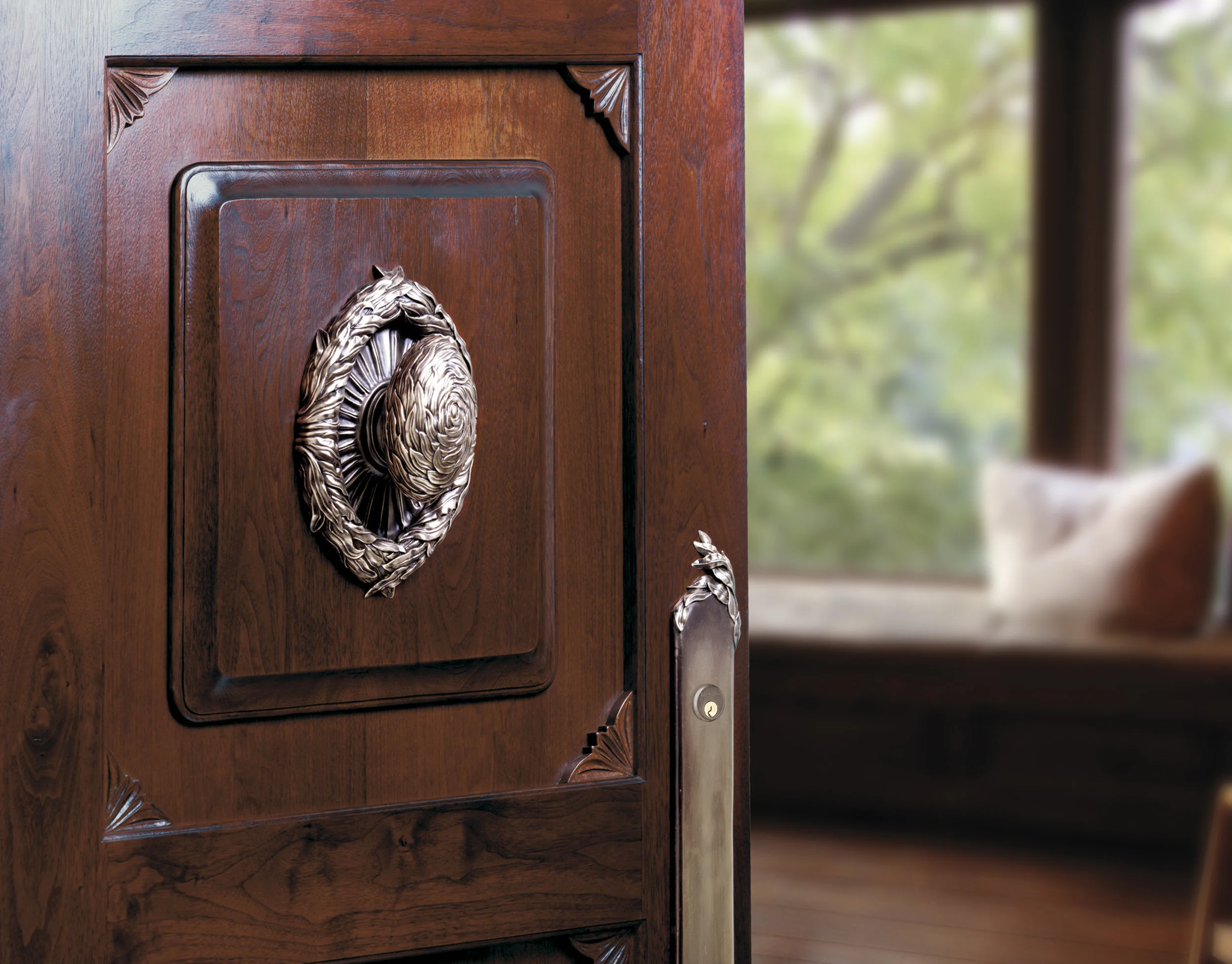Oil Rubbed Bronze
We are revisiting ways we show our collection of Willow entry door knobs and interior handle sets. The trend is moving from old darker traditional finishes to lighter oil rubbed finishes.
The Willow collection, while inspired by swirling willow leaves and tendrils, still reflected the classical lines of older European architecture that Martin and I knew in England. Indeed, Martin’s training as a wood carver required him to carve more formal flowers and leaves as relief carvings and this education served him well when carving the very detailed facets of the Willow collection.
By moving away from dark oiled bronze to a lighter patina the detail of the piece is now able to shine through. We hope you will like this new direction but should you still be looking for a more Baroque or Victorian finish we are continuing to offer this collection in darker tones.
The photos here show the before and after appearance of the passageway, privacy and entry knobs and lever sets.
To create the light and dark patinas we follow the same process of finely buffing away imperfections visible on the surface of bronze and then immersing the piece into a premixed oxide. The oxide creates a fine dark film as it adheres to the surface but it is immersed twice to create an even and strong bond. The oxidized bronze is then re-buffed or sanded thereby removing the dark patina to expose the bright champagne tone of the silicon bronze. The difference between these 2 finishes reflects how much and what areas of the oxidized film are removed by buffing.
The degree to which the surface is sanded and polished also impacts the level of contrast this is done prior to the casting being oxidized. In the darker piece the willow leaves were polished to a higher luster than the back plate which was left as a satin finish and which when oxidized creates a greater contrast. By comparison the lighter piece was more evenly polished to a satin finish and the effect is a more universal tone.





